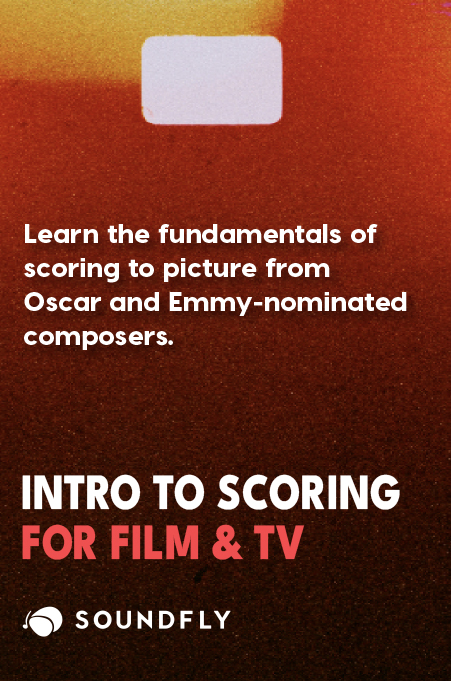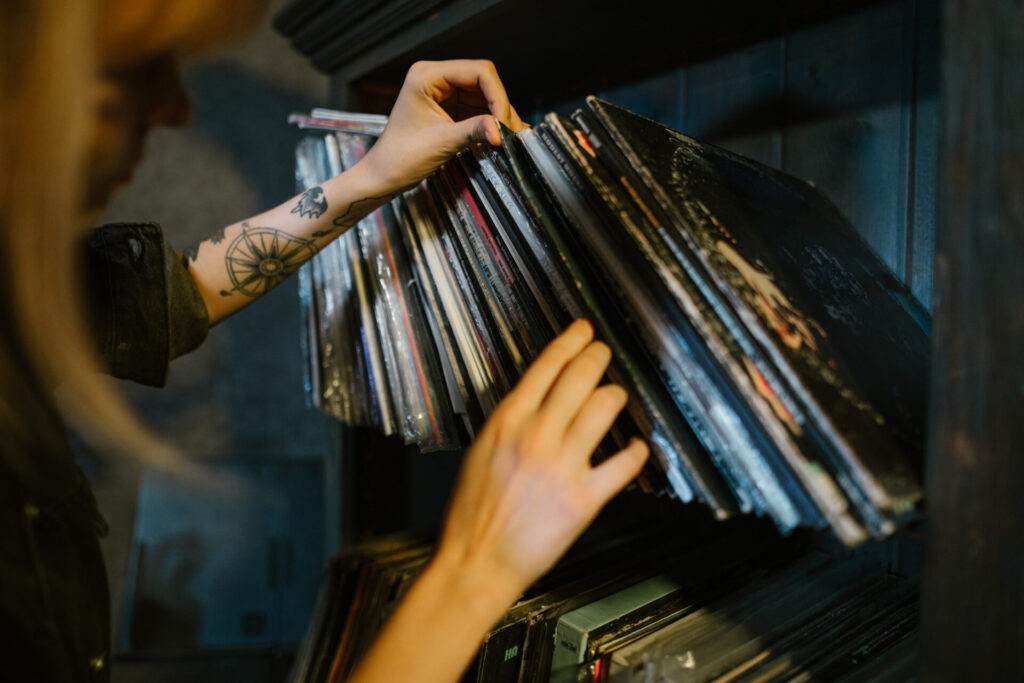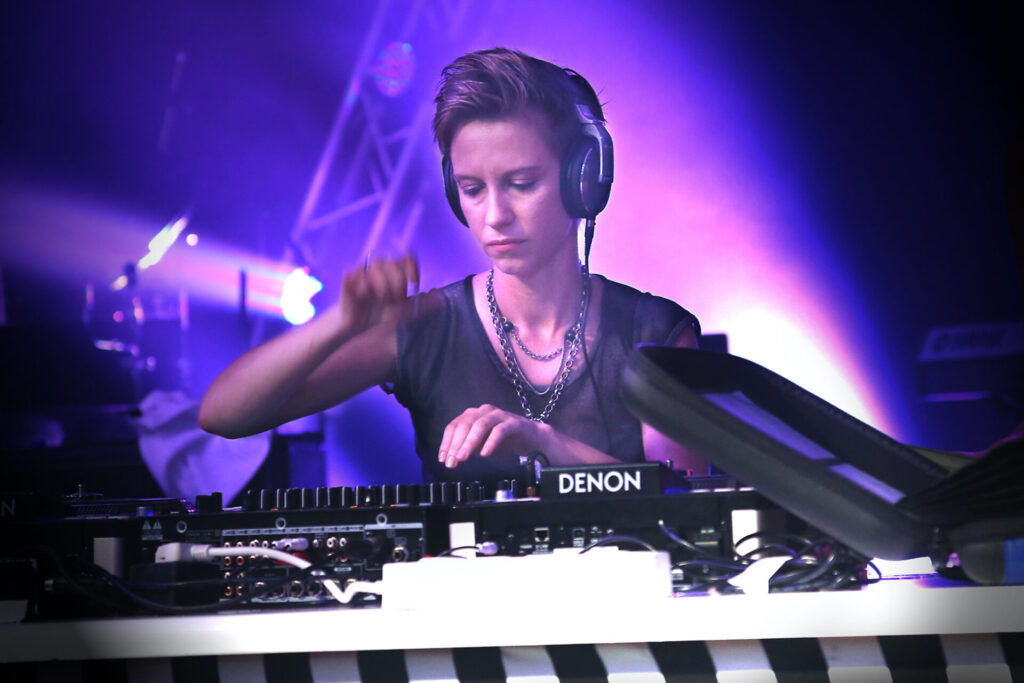+ Learn how to break out of repetitive loops and add emotionality and vulnerability to your tracks with Jlin in Rhythm, Variation, & Vulnerability.
If you are an independent artist, you’ve probably released your music on digital streaming platforms such as Spotify or Apple Music. You’ve also probably meditated on whether these platforms will actually help draw in revenue, perhaps ultimately being happy to have your music up there for the sake of being introduced to new audiences.
But how do new audiences actually find your music on these platforms?
For so many indie artists, the answer is: playlists.
It might not seem obvious at first, but streaming is one of the most important marketing sources for independent artists today, and a lot of that comes down to the fact that millions of listeners entrust their tastes and preferences with periodically updated playlists that get delivered directly to them, whether they’re generated by humans or algorithms.
But bigger isn’t always better. Like in most creative industries, the key to success in streaming, is to first find your niche, identify a target audience, and then gradually move to a bigger audience. And playlists can be a great advantage at every step of this process; first by finding your niche audiences, and then leveling up to wider communities of fans.
+ Read more on Flypaper: “4 Digital Music Distribution Outlets Compared.”
Genres or Moods?
In the traditional music industry model, pre-digital streaming, albums were the main format of music consumption, so music was classified by genres. With streaming however, music is consumed mainly in single songs and in the form of playlists, which classify music based on specific moods, experiences, emotions and even daily activities, to correspond to what people are doing or feeling while listening.
Hence, before you get started pitching your song to playlists, I suggest asking yourself a few questions and writing down the answers:
- Which emotion(s) do I feel when I listen to this song?
- What kind of imagery does this song create for me?
- Which mood(s) does this song put me in?
- What activities could I see a listener doing while my song plays?
Now, it might be hard to look at your song from such an objective standpoint. In that case, I suggest asking these questions above to your friends and fans, and to start collecting their answers as feedback.
Soon after you work out these answers, take a look at them and see if you can see any patterns, particularly any recurring keywords or search terms that could be helpful for people trying to find your music, or music that sounds like yours, on the internet. Then, you will be able to research these keywords on streaming platforms — and voilá!
+ Learn production, composition, songwriting, theory, arranging, mixing, and more; whenever you want and wherever you are. Subscribe for full access!
Reaching Out and Making Contact
Spotify For Artists allows you to pitch a new song directly to playlists they manage. And when it comes to independent playlists, you will notice that some streaming platforms list the curators, so you can reach out and pitch your songs to them directly. But this isn’t always the case.
In fact, most playlist curators are regular music listeners like you and I, so don’t expect them to place your song right away because this is probably not their job.
Therefor, many times, playlist pitching and building should be a communal, mutually-beneficial process that you engage in actively. By this I mean a situation in which musicians, playlist makers, and fans are working together to create the best curated possibilities for any given niche. When asking something of people at this level, you would have to offer something in exchange that fits to the spirit of this community-driven action.
For instance, I always offer to promote someone’s playlist to my social networks; which I I think is a nice gesture, and it creates reciprocity. Moreover, exchanging music this way starts forming a community of listeners and I’ve had quite a few playlist curators end up becoming fans of my music.
With playlists, you are able to reach an entire group of people that might not have heard of your music before.
Let’s say you’re an electronic artist and you’ve collaborated with a K-pop singer. If your music gets on some Korean music playlists, then you can be exposed to millions of people speaking Korean, who might not have had a frame of reference to check you out previously.
This is a really powerful tool that is, essentially, available to any artist.
Choosing the Best Songs
You will eventually notice that some songs will be placed on more playlists than others, or that some songs garner more plays than the others. Whether you’re expecting this or not, this is a great indication as to which songs are liked more by the listeners, curators, and delivery algorithms than your others.
Knowing this information may also give you an indication as to which moods best fit your digital audience, and that could be used for future marketing and/or songwriting efforts.
Now, I understand this is a lot of work — and please don’t expect to get results very quickly — but if you take this to heart, and keep working consistently to follow these analytical trails, you’re guaranteed to see results in a monthly pay check and a growing fan base.
In 2022, if you are an independent artist, you should already be aware that having multiple sources of income is crucial. Playlisting is a great way to not only generate income, but find more fans and grow your fanbase globally. You have to talk to a lot of people, and network wherever possible, so consider playlist pitching as a digital version of that.
I hope that you’ll get a lot of fans and you’ll get more revenue and I wish you all the best of success!
Don’t stop here!
Continue learning with hundreds of lessons on songwriting, mixing, recording and production, composing, beat making, and more on Soundfly, with artist-led courses by Kimbra, Com Truise, Jlin, Ryan Lott, and the acclaimed Kiefer: Keys, Chords, & Beats.





